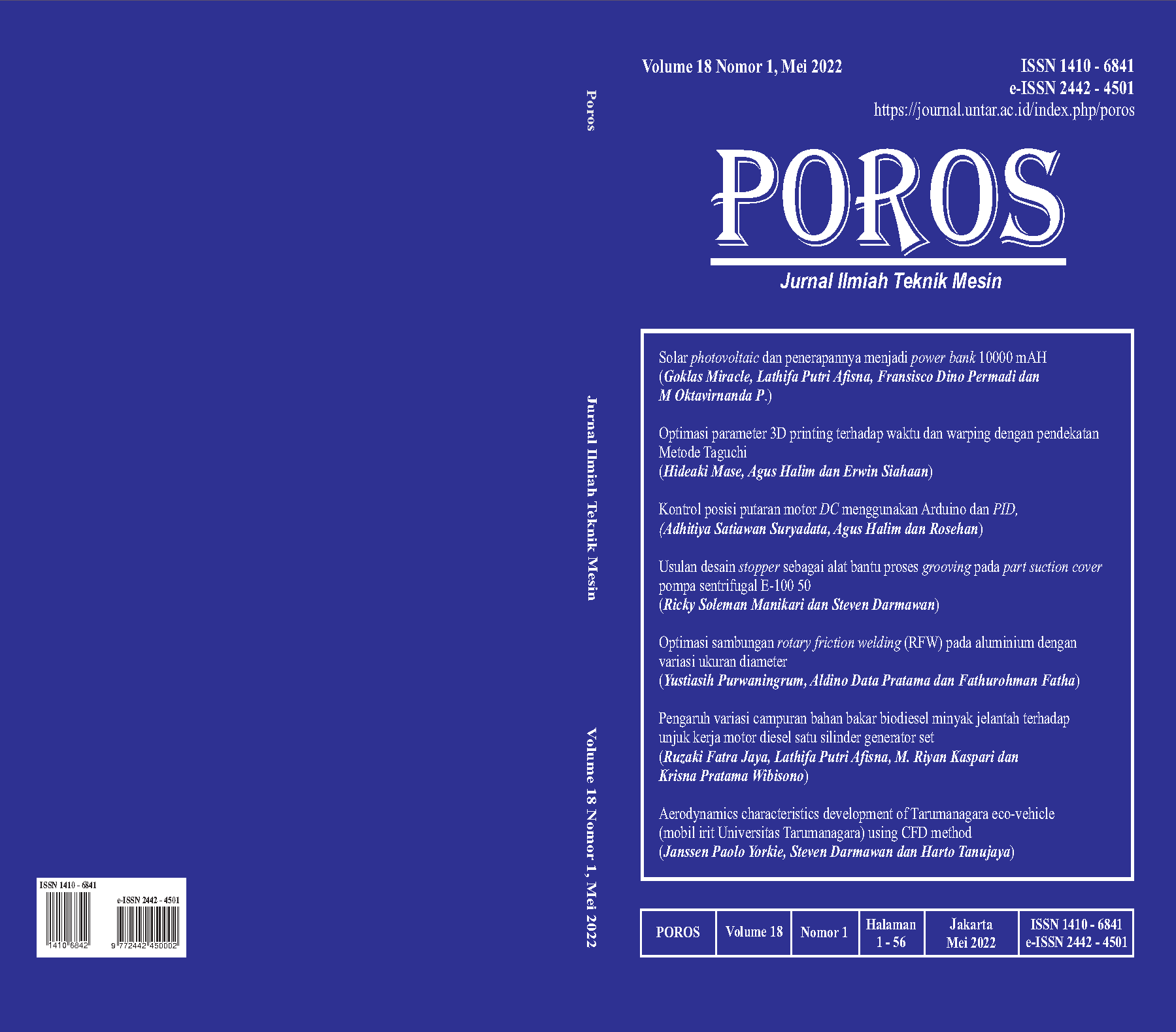KONTROL POSISI PUTARAN MOTOR DC MENGGUNAKAN ARDUINO DAN PID
Main Article Content
Abstract
The development of industrial technology is growing rapidly, especially in the field of control systems, one of the controllers that is often used, namely PID which is composed of proportional, integrals, and derivatives, each control has a different role and to determine the value of each control sometimes trials are needed to find the right value. The advantages of this type of controller are that the algorithm used is simple but with accurate output, in this study a potentiometer is used for determining the set point and then an encoder which is useful for reading DC motor rotation and arduino.uno as a medium in implementing the PID system. This journal aims to be a learning medium to determine the parameters on the PID. The method used is a systematic method that starts with making a literature study that will determine the detailed requirements. After that, it is continued with the design of the microcontroller circuit using the Tinkercad website and doing 2D and 3D designs. The results of the design obtained that this circuit can work perfectly because every input given by the potentiometer can drive the motor smoothly and accurately through the encoder reading.
Article Details
Section

This work is licensed under a Creative Commons Attribution-NonCommercial-ShareAlike 4.0 International License.

This work is licensed under a Creative Commons Attribution-NonCommercial-ShareAlike 4.0 International License.
References
S. Khan et al., “Design and Implementation of Potentiometer-Based Nonlinear Transducer Emulator.” Kuala Lumpur, Malaysia, p. 11, 2011.
Y. C. Chen, C. H. Lee, M. J. Chou, and S. C. Shen, “High-Precision Digital Rotary Encoder Based on Dot-Matrix Gratings,” IEEE Photonics J., vol. 10, no. 2, pp. 1–12, 2018, doi: 10.1109/JPHOT.2017.2781465.
A. A. A. Ismail and A. Elnady, “Advanced Drive System for DC Motor Using Multilevel DC/DC Buck Converter Circuit,” IEEE Access, vol. 7, pp. 54167–54178, 2019, doi:10.1109/ACCESS.2019.2912315.
V. Singh and V. K. Garg, “Tuning of PID controller for speed control of DC motor using soft computing techniques - A review,” Int. J. Appl. Eng. Res., vol. 9, no. 9 SPEC. ISSUE, pp. 1141–1147, 2014.
S. F. Anggraini, A. Ma’arif, and R. D. Puriyanto, “Pengendali PID pada Motor DC dan Tuning Menggunakan Metode Differential Evolution (DE),” TELKA - Telekomun. Elektron. Komputasi dan Kontrol, vol. 6, no. 2, pp. 147–159, 2020, doi:10.15575/telka.v6n2.147-159.
Iswanto, A. Ma’arif, R. D. Puriyanto, N. M. Raharja, and S. N. Rahmadhia, “Arduino Embedded Control System of DC Motor Using Proportional Integral Derivative,” Int. J. Control Autom., vol. 13, no. 4, pp. 658–667, 2020.
L. Louis, “Working Principle of Arduino and Using it as a Tool for Study and Research,” Int. J. Control. Autom. Commun. Syst., vol. 1, no. 2, pp. 21–29, 2016, doi:10.5121/ijcacs.2016.1203.
A. Akinpelu, M. R. Usikalu, and C. A. Onumejor, “Construction of High Precision AC- DC Power Supply,” Int. J. Recent Technol. Eng., vol. 8, no. 6, pp. 2049–2051, 2020, doi:10.35940/ijrte.f7180.038620.

